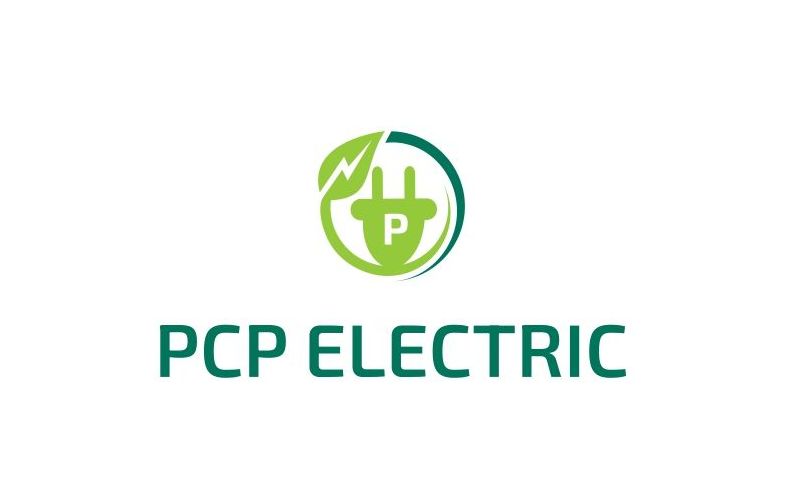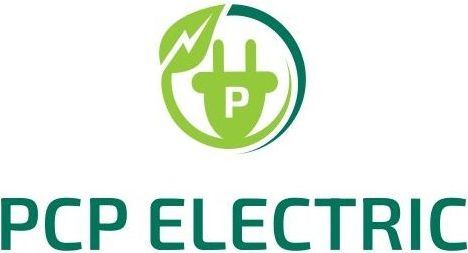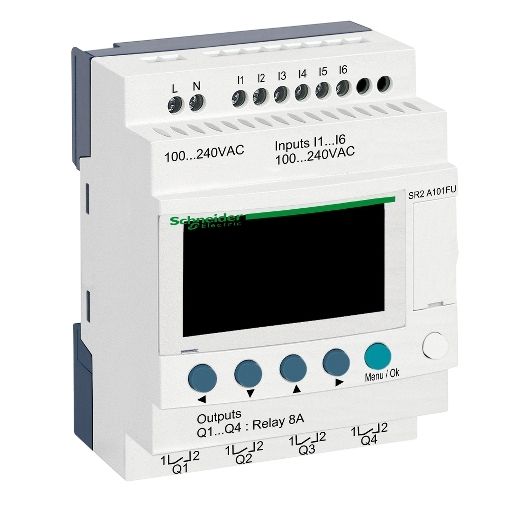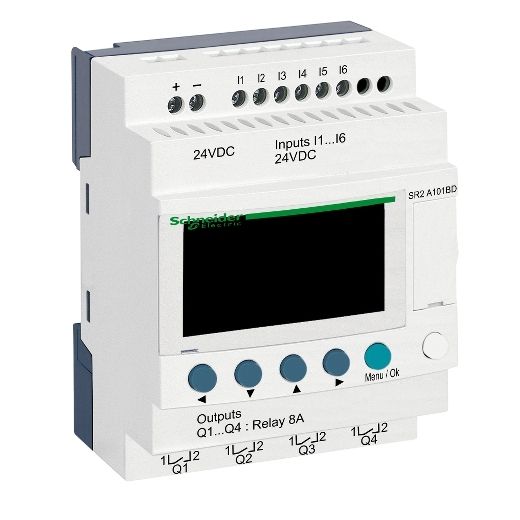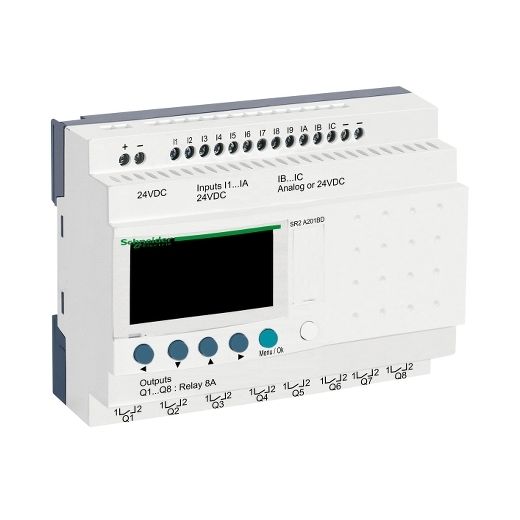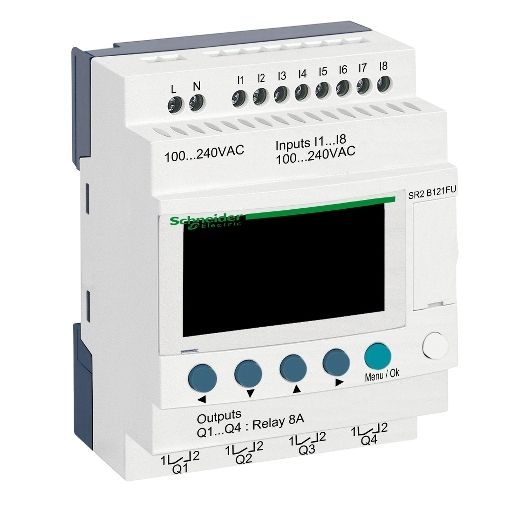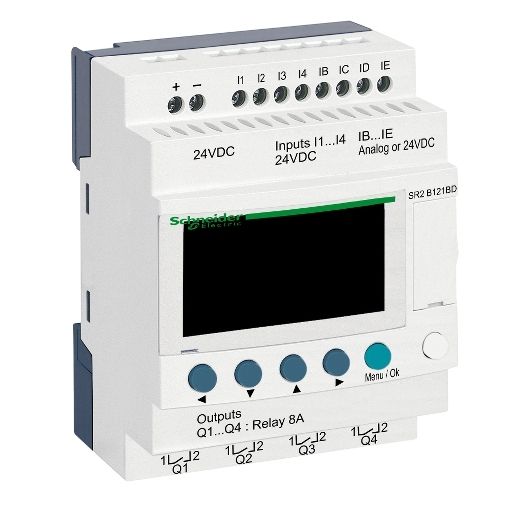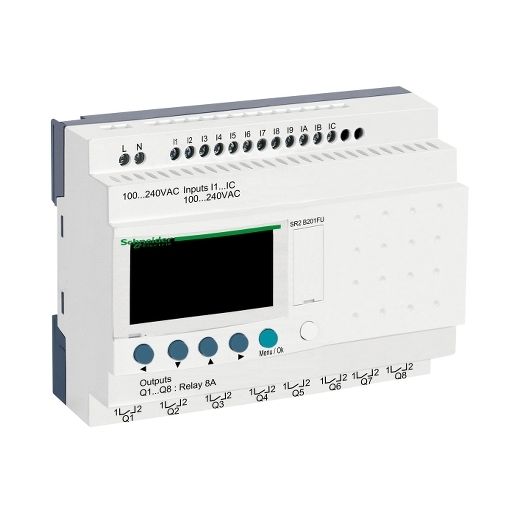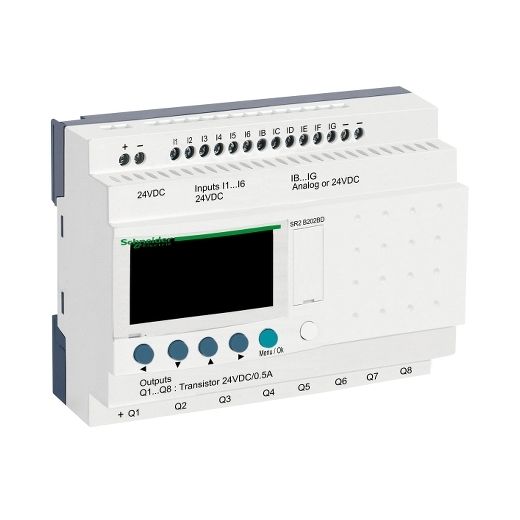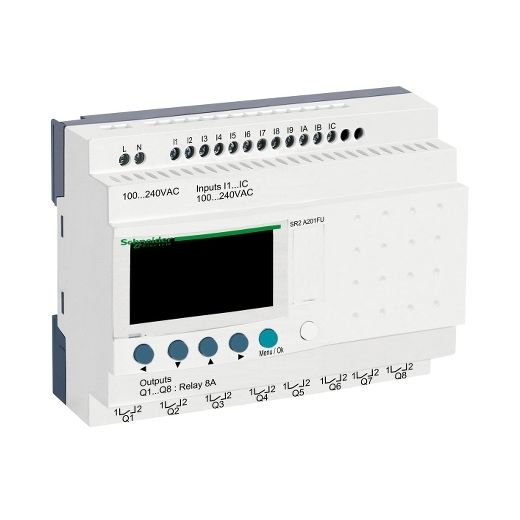Compact Module
Compact Smart Relay: Zelio Logic
The Zelio Logic smart relays, part of Schneider Electric's Harmony range, are versatile, compact, and easy-to-use solutions for simple automation tasks. These smart relays combine the functionality of relays, timers, counters, and programmable logic controllers (PLCs) into a single, compact unit, making them ideal for small automation projects in various industries.
Key Features of Zelio Logic Smart Relays
- Compact Design
- Space-Efficient: Designed to save space in control panels, making them suitable for applications with limited installation space.
- DIN Rail Mounting: Easily mountable on standard DIN rails for straightforward installation and integration.
- User-Friendly Programming
- Simple Programming Language: Use of Zelio Soft software with ladder logic or function block diagram (FBD) programming for easy and intuitive programming.
- Built-In Display: Some models come with an integrated display and keypad for on-site programming, monitoring, and adjustments without needing a PC.
- Versatility
- Multiple Functions: Combines relays, timers, counters, and logic functions in one device.
- Expandable: Certain models offer expansion modules to increase the number of inputs and outputs.
- Communication Capabilities
- Network Integration: Some models support communication protocols such as Modbus, enabling integration with larger control systems and remote monitoring.
- Energy Efficiency
- Low Power Consumption: Designed to operate efficiently with minimal power usage, making them cost-effective for long-term operation.
- Robust and Reliable
- Industrial Grade: Built to withstand harsh industrial environments, ensuring reliability and longevity.
- High Switching Capacity: Capable of handling a wide range of loads.
Applications of Zelio Logic Smart Relays
- Small Machinery Automation
- Control Small Machines: Ideal for automating small machines and equipment, providing control over motors, actuators, and other components.
- Sequence Control: Manages simple sequential operations and interlocking.
- Building Management
- Lighting Control: Automates lighting systems based on time schedules or sensor inputs.
- HVAC Systems: Controls heating, ventilation, and air conditioning systems for energy efficiency and comfort.
- Industrial Automation
- Process Control: Handles basic process control tasks such as batching, mixing, and monitoring.
- Safety and Alarming: Implements safety interlocks and alarm functions for equipment and process safety.
- Water Management
- Pump Control: Automates the control of water pumps, ensuring efficient operation and water usage.
- Irrigation Systems: Manages irrigation schedules based on time or environmental conditions.
- Energy Management
- Load Management: Controls and monitors electrical loads to optimize energy consumption.
- Renewable Energy Systems: Integrates with renewable energy sources to manage and monitor energy production and storage.
Advantages of Using Zelio Logic Smart Relays
- Cost-Effective: Combines multiple functions into a single device, reducing the need for separate components and lowering overall system costs.
- Flexibility: Easily programmable and reconfigurable for different applications and changes in system requirements.
- Ease of Use: User-friendly programming tools and intuitive interfaces simplify setup and operation.
- Compact and Efficient: Space-saving design and low power consumption make them suitable for a wide range of applications.
Conclusion
Zelio Logic smart relays offer a compact, versatile, and user-friendly solution for simple automation tasks. Their ability to combine multiple control functions in a single unit makes them ideal for small-scale automation projects across various industries, including industrial automation, building management, and energy management. By providing reliable performance, ease of programming, and flexibility, Zelio Logic smart relays help enhance the efficiency and effectiveness of automation systems.
